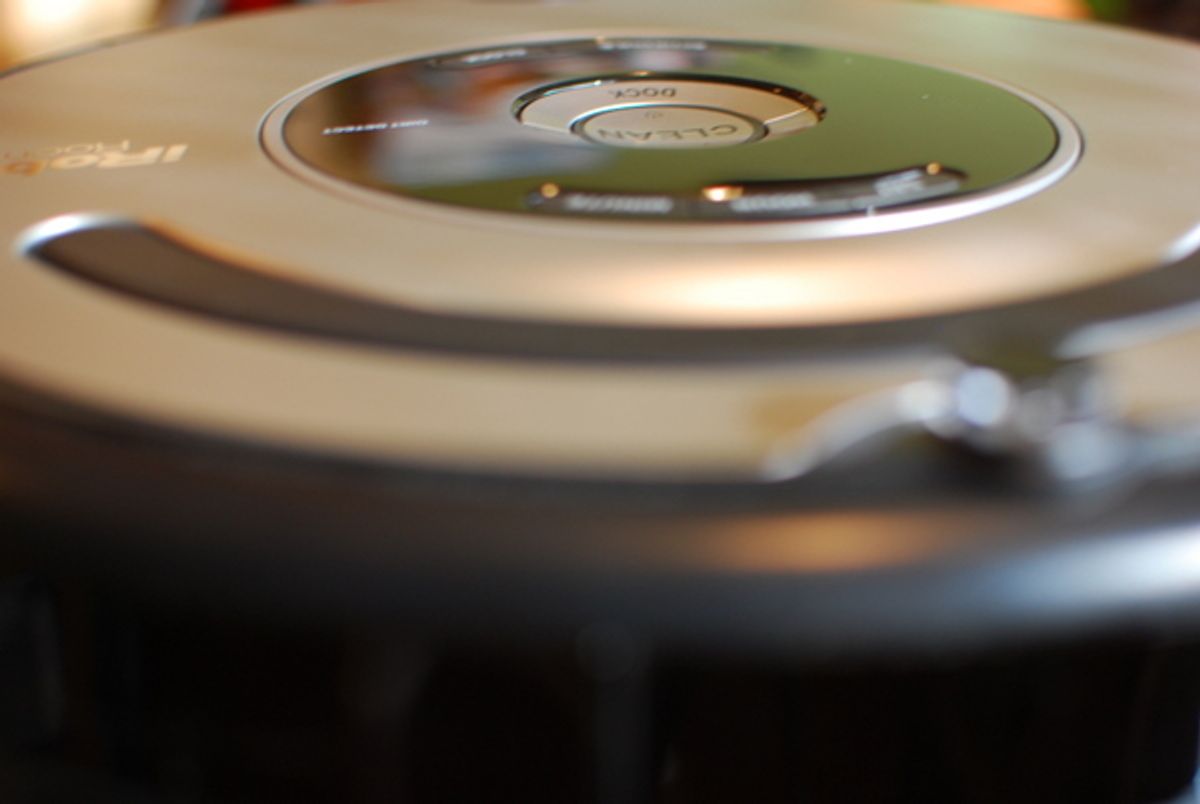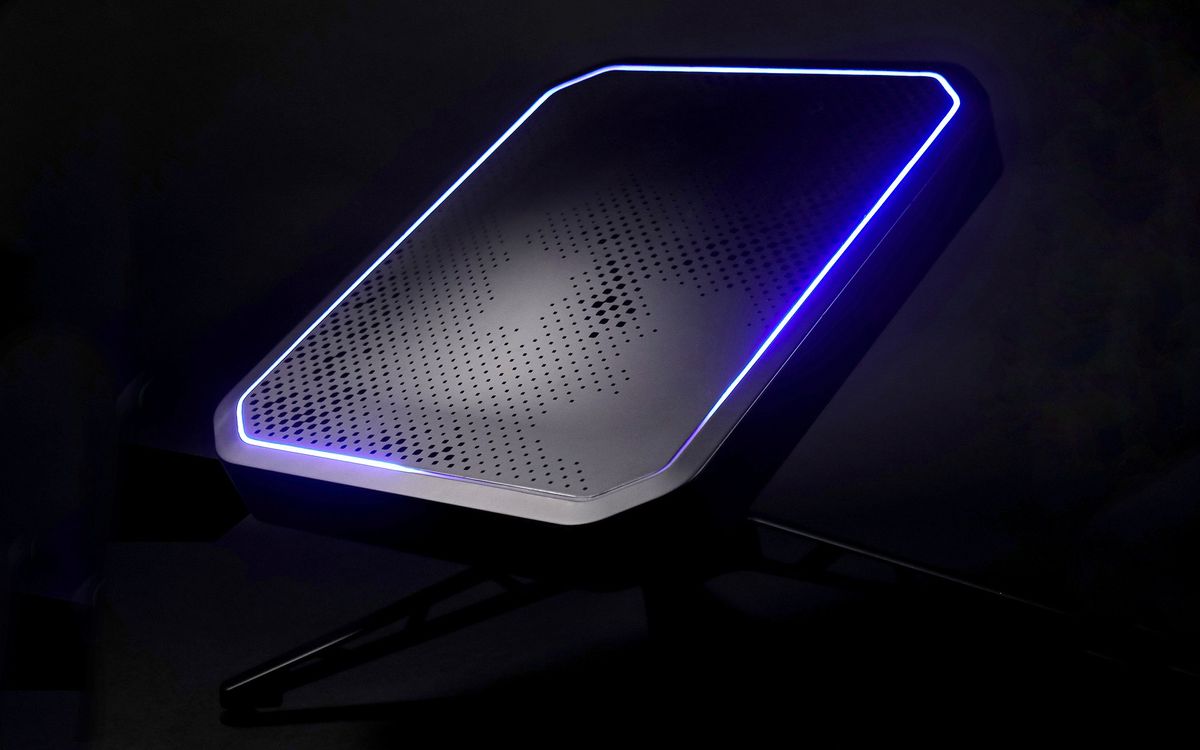The iRobot Roomba is not a new product. Since 2002, it has been (more or less) the only robotic vacuum available to consumers in the US. iRobot has been continually improving the Roomba, however, and the Roomba 560 is one of the latest and most sophisticated models. Now that there’s some new competition on the horizon, it’s a good time to take an updated look at the Roomba and what makes it a reliable and effective autonomous vacuum. We’ll have a review of the aforementioned competition (the Neato XV-11) up tomorrow so that you can compare the two, but for today, we have a review of the Roomba 560.
If you’re not familiar with the Roomba, here’s the deal: it’s a robotic vacuum cleaner that can clean your floors all by itself. All you have to do is tell it to start cleaning, and it’ll go clean, avoiding obstacles and getting around furniture and ultimately returning to its home base to recharge itself. There’s a lot more too it than that, of course… Lots more, after the jump.
The particular Roomba that we’re reviewing is a 560. The 560 is a fifth generation Roomba, which is a significant upgrade from the earlier 400 series. It’s generally about the same size and shape, with a 13″ diameter and a weight of about 8 pounds. It’s also quite stylish, with a slick black and silver color scheme that doesn’t make you want to hide it in a closet like a conventional vacuum. This is good, because having your Roomba in a closet pretty much defeats the entire purpose of a robotic vacuum, especially one with on-board scheduling like the 560 has. But I’m getting ahead of myself.
The Roomba is able to clean autonomously thanks to its suite of sensors. Proximity sensors on the front of the robot work with a physical bump sensor to help the robot avoid walls and maneuver around obstacles and furniture. Drop sensors underneath keep the robot from going over stairs or ledges. On top, the Roomba has an infrared sensor that allows it to find its dock and use virtual walls (more on those later).
All of these sensors provide a limited amount of information about the Roomba’s environment and path, but they don’t directly tell the Roomba where it is in a given room. Instead, the robot relies on an algorithm to tell it where to go next, and cleans in a variable pattern that ends up covering most areas of a room between three and five times. While this pattern looks totally random, it’s not, and the patterns are actually derived from MIT research on the efficient coverage behaviors of foraging insects.
To do the actual cleaning, the Roomba combines a vacuum system with two counter-rotating brushes. The brushes help pick up all the big things (with the bristle brush and rubber beater brush working together like a broom and dustpan), while the vacuum itself takes care of smaller particles and dust. All off this stuff ends up in a removable bin at the rear of the Roomba, which incorporates a replaceable air filter. The entire vacuum module (the green piece in the above picture) is flexible and can move up and down, which helps the Roomba to adapt to floors and different lengths of carpet. Since the Roomba is fetchingly round, it does have some issues getting into corners. On the right side near the front is a spinning brush that’s designed to mitigate that problem to some extent by sweeping dirt and stuff out of corners and back under the Roomba.
While the Roomba is entirely capable of cleaning by itself, it does take a little bit of work to “pre-clean” your floor for it to be most effective. The robot can’t lift things, of course, so if you have a bunch of stuff all over the floor, you’re not going to get the best cleaning. The Roomba will nudge things a bit, but it tends to get caught on stuff like loose clothing and may become stuck. If that happens, the robot will try to free itself, and if it can’t it’ll stop and beep at you to come free it. Not a big deal, but it does keep it from autonomously completing its cleaning, so it’s best to keep things tidy. Supposedly, the 500 series of Roombas are good at not getting themselves entangled in cords and rug fringes and other stringy things. This has not been my experience. I guess it’s partially my fault for having ten thousand power cords strewn all over the place, but the Roomba likes to grab them and then run away, unplugging things as it does. It also manages to (occasionally) rip out pieces of fringe from a rug. My guess is that the anti-tangle system works if the Roomba considers itself tangled, but it has a tendency to tug pretty hard before it reaches that point.
Overall, I’ve been very impressed with how well the Roomba cleans. I bought my parents a 530, which managed to fill its dirt bin in one run around our living room the day after the carpet had been professionally steam cleaned. The bristle brushes do a great job of picking up stuff like pet hair, and for beating dirt out of carpet. The Roomba is least effective in corners and around objects, where it can’t always get its brushes close enough to the edges of things. I ran the 560 every other day or so for about a week, and in each case, the floor (which is half carpet, half hardwood) was noticeably cleaner when it was finished, and the Roomba’s dirt bin was nearly full. It’s not a substitute for a conventional vacuum, not completely, but it does a pretty darn good job for day-to-day cleaning.
The 500 series Roombas also include a ‘Dirt Detect’ feature, which gives them the ability to sense where there’s a particularly dirty spot and then spend more time there (in a tight spiral). Incidentally, if there’s just one spot you want cleaned, you can set the Roomba down manually and have it ‘Spot Clean’ just that bit instead of the whole room.
To clean an average sized room takes the Roomba 560 about 45 minutes. This seems like an awfully long time, especially if you watch it at work, which you totally will, because it’s adorable. It can also be frustrating at times, since you start to wonder why it’s covered that particular spot 37 times but still hasn’t managed to catch the rogue dust bunny over by the couch. Remember, while the Roomba may look like it’s just bumbling around randomly, it’s actually following an algorithm designed to cover all areas of a room multiple times. If there are places you don’t want it to go, you can set up little round towers the project a ‘virtual wall’ of infrared light that the Roomba won’t cross. The 560 is able to clean up to four rooms before it needs to head back to its home base to recharge, which it does all by itself when it considers itself finished or when it’s low on battery power.
While the Roomba certainly cleans effectively, it tends to make quite a mess of itself while doing so, which calls for weekly maintenance (or more often, depending on how frequently you run it). I’m not talking about just emptying the dustbin… Dust and hair get trapped in and around the brushes, and even inside the brush bearings themselves, necessitating partial disassembly of the cleaning compartment. It’s very easy to do this, but it’s still a chore, and often extraordinarily tangled and dirty requiring patience (and scissors) to clean out.
Really, it’s surprising how well the Roomba is able to clean on its own. iRobot has gotten the design to the point where with a little bit of forethought, you can just leave the robot cleaning and come back a few hours later and it’ll be back on its base charging. The 560 gives you some additional options (if you trust it) to schedule cleaning for when you’re not around. This is all done on the robot itself using a few buttons and an LCD… You can set different cleaning times for each day, and the robot will wake itself up, clean your room(s), and then go back to its base. You still have to remember to empty the bin and clean it and stuff, but daily vacuuming doesn’t get much simpler than that.
Although we reviewed the Roomba 560, iRobot makes a variety of different models with slightly different capabilities (and different costs). The base 500 model is the 510, for $280, but you don’t want that one ’cause it doesn’t come with a charging dock. As you go up through the different (and increasingly expensive) models, you gain battery life, on-board scheduling, some accessories, and (eventually) the ability to use Lighthouses, which are special Virtual Wall units that help the Roomba navigate around multiple rooms. The 560 that we reviewed here costs $350 and can’t use Lighthouses, which is funny, since my other Roomba (a 535 model that cost $250 and appears to be discontinued) can. Anyway, when you’re looking at buying a Roomba, it’s important to put some thought into how you’re going to use it. You definitely want a 500 series with a self-charging dock, but as far as other features go, consider how many rooms you’d like it to clean, whether you’d like it to move from room to room on its own, and whether you’re going to start the Roomba cleaning yourself or you’d like it to start by itself (when you’re not home, for example). It’s important to remember, though, that the fundamental cleaning technology is basically the same. You can pay a bit more for some extra features, but the robot isn’t going to navigate any differently or pick up any extra dirt.
The 560 is a fifth generation Roomba. As such, it benefits from a half decade worth of improvements that iRobot has implemented based on customer feedback and testing. It’s a practical and polished robotic vacuum that works in your home and can actually make your life easier… Or at least, make your floors cleaner. You can pick one up at iRobot.com, but I might recommend that you buy it from a retail store like Best Buy so that you can try it out and take it back if it’s not for you. You won’t take it back, though… Once you let it run around your house a little bit, you’ll be sold. It’s awesome.
For more on how the Roomba works, check out our interview with Nancy Dussault Smith, Vice President of Marketing Communications at iRobot.
Evan Ackerman is a senior editor at IEEE Spectrum. Since 2007, he has written over 6,000 articles on robotics and technology. He has a degree in Martian geology and is excellent at playing bagpipes.











